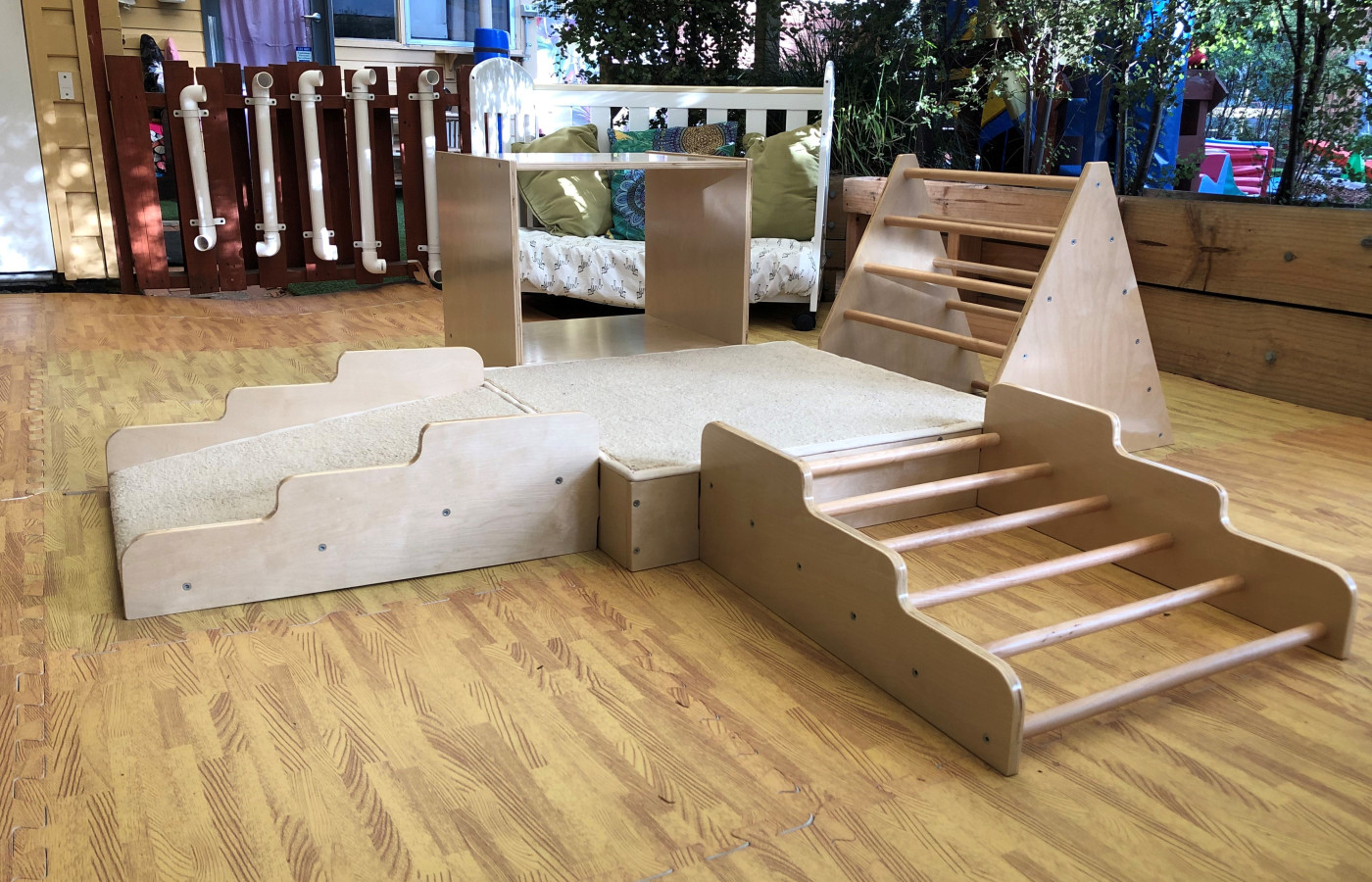Obstacle course

Obstacle course
Climbing and moving around the obstacles
Materials Required
- Chairs
- Tables
- Brooms
- Boxes
Step stool (if available), Garden hose (if outside)
Play experience profile
-
Ages:
-
Min Playtime5 - 15 Minutes
-
Skills
-
Energy LevelActive play
-
Messiness Rating
-
EYLF Outcomes
Play Experience Preparation
Find suitable items and suitable space to use for your obstacle course - This may be inside or outside.Experience Steps
- Lay items out in the space (allow space between each item).
- Depending on where you are making the course it could be a circuit (outside) or a straight line (inside, e.g. down a hallway).
- Talk with your child about ways to move around the course. Jump over the broom, crawl under the table, climb over the chairs, move around the boxes, climb up the steps (if using a step stool), follow the hose (if using a garden hose).
- Take it in turns to go around, over and through the obstacles.

What to talk about, or questions to ask during the experience
- Encourage children to help select items for the course.
- Ask children what ways they can move around the course.
- Talk about ways to move like animals: slither like a snake under the table, jump like a kangaroo over the broom.
Build on this...
- Move the items around to make different courses.
- Time each person to see how fast they go through the course.
- Set up the course in different spaces.
- Allow running space between items if you have room outside.
WHO guidelines for physical activity and sedentary behaviour
Provide evidence-based public health recommendations for children, adolescents and adults on physical activity.
Learn more
Provide evidence-based public health recommendations for children, adolescents and adults on physical activity. Learn more
This activity encourages children to use their bodies to move in different ways.
EYLF Outcomes
The Early Years Learning Framework has been designed for use by early childhood educators working in partnership with families, children’s first and most influential educators.
View PDF
The Early Years Learning Framework has been designed for use by early childhood educators working in partnership with families, children’s first and most influential educators. View PDF
- Children take increasing responsibility for their own health and physical wellbeing
- Children develop a range of skills and processes such as problem solving, inquiry, experimentation, hypothesising, researching and investigating
- Children develop dispositions for learning such as curiosity, cooperation, confidence, creativity, commitment, enthusiasm, persistence, imagination and reflexivity
EYLF Principle
Principle 3: High expectations and equity. Children progress well when they, their parents and educators hold high expectations for their achievement in learning.
EYLF Practice
Practice: Learning environments. Indoor and outdoor environments support all aspects of children’s learning and invite conversations between children, early childhood educators, families and the broader community. They promote opportunities for sustained shared thinking and collaborative learning.
Author:


